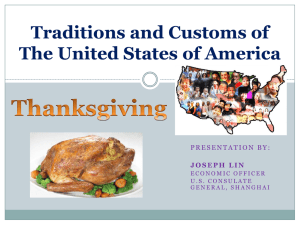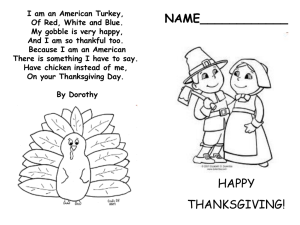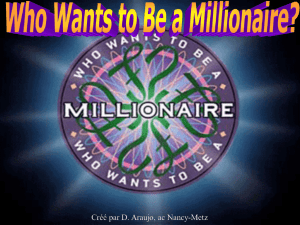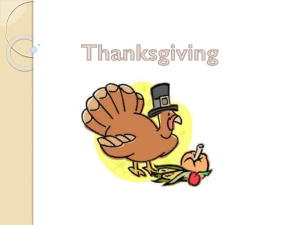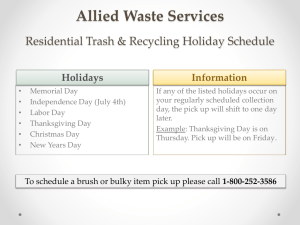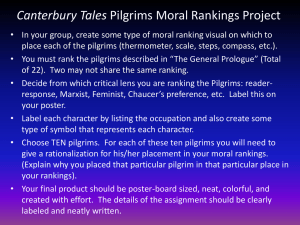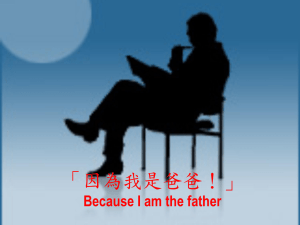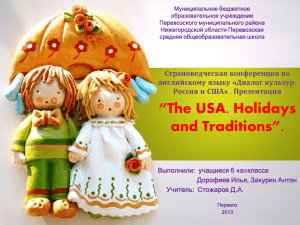Cause & Effect Connecting Words
advertisement
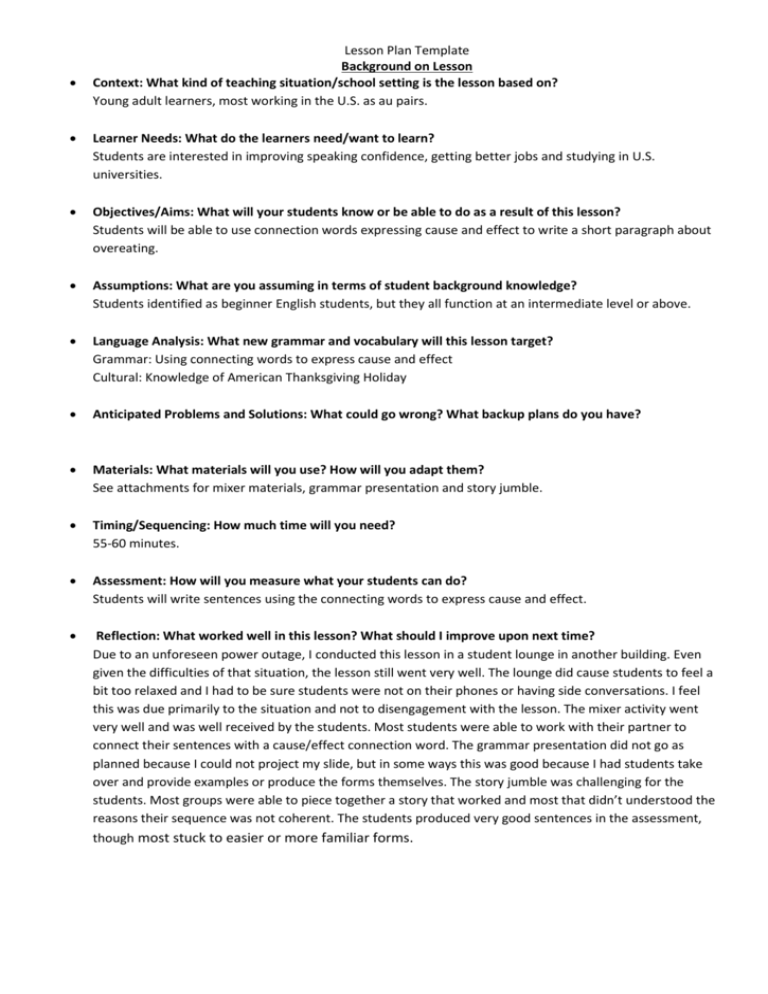
Lesson Plan Template Background on Lesson Context: What kind of teaching situation/school setting is the lesson based on? Young adult learners, most working in the U.S. as au pairs. Learner Needs: What do the learners need/want to learn? Students are interested in improving speaking confidence, getting better jobs and studying in U.S. universities. Objectives/Aims: What will your students know or be able to do as a result of this lesson? Students will be able to use connection words expressing cause and effect to write a short paragraph about overeating. Assumptions: What are you assuming in terms of student background knowledge? Students identified as beginner English students, but they all function at an intermediate level or above. Language Analysis: What new grammar and vocabulary will this lesson target? Grammar: Using connecting words to express cause and effect Cultural: Knowledge of American Thanksgiving Holiday Anticipated Problems and Solutions: What could go wrong? What backup plans do you have? Materials: What materials will you use? How will you adapt them? See attachments for mixer materials, grammar presentation and story jumble. Timing/Sequencing: How much time will you need? 55-60 minutes. Assessment: How will you measure what your students can do? Students will write sentences using the connecting words to express cause and effect. Reflection: What worked well in this lesson? What should I improve upon next time? Due to an unforeseen power outage, I conducted this lesson in a student lounge in another building. Even given the difficulties of that situation, the lesson still went very well. The lounge did cause students to feel a bit too relaxed and I had to be sure students were not on their phones or having side conversations. I feel this was due primarily to the situation and not to disengagement with the lesson. The mixer activity went very well and was well received by the students. Most students were able to work with their partner to connect their sentences with a cause/effect connection word. The grammar presentation did not go as planned because I could not project my slide, but in some ways this was good because I had students take over and provide examples or produce the forms themselves. The story jumble was challenging for the students. Most groups were able to piece together a story that worked and most that didn’t understood the reasons their sequence was not coherent. The students produced very good sentences in the assessment, though most stuck to easier or more familiar forms. Practicum 4- 22-November-2014 Objective: Students will be able to use connection words expressing cause and effect to write a short paragraph about overeating. Stage Procedure Materials Time Pre-Class activities: Write objective on art paper and post, Write Connecting words on the board, Pre-designate groups of 3 Talk about Thanksgiving. Elicit what the students know. Board 5min Warm up Explain traditions. (Define: Pardon) Projector Posted Objective on Discuss topic and objective. Wall Cause & Effect sentence mixer with a Thanksgiving Projector 10min Activity 1 theme. (instructions) Slips of paper Each student gets a slip of paper with a sentence that is either a cause or effect. They must mix and find the student with the cause or effect that matches their own. Project a list of cause & effect connecting words. Projector 5min Activity 2 STS will work with their partner to connect the two sentences with a connecting word. Presentation on cause & effect connecting words. Projector 5min Activity 3 Grammar Point Sheet Students work in teams of 3 to put together stories from a Projector 10min Activity 4 sentence jumble. Then they connect the sentences with (instructions) connecting words. Sentence jumble Brainstorm with students ideas about the cause and effects Board 5min Activity 5 of overeating. Students write 3-5 sentence paragraph on the cause and Projector (instructions 10min Assessment effects of overeating. & prompt) Students share their paragraphs with their groups. Projector 5min Activity 7 (instructions) Thank students for attendance & participation. Remind 2min Wrap up them that we will not be here next week. Cause/Effect Mixer I ate too much pumpkin pie. I got a stomach ache. I have 10 people coming for dinner. I have to cook a lot of food. The parade starts at 9am. I have to wake up on time. It takes 5 hours to roast a turkey. I have to put it in the oven by eleven o’clock. The pilgrims didn’t have enough to eat. The Native Americans shared their food. President Abraham Lincoln declared Thanksgiving a national holiday. We celebrate it every year. Every year, the President chooses one turkey to pardon. It doesn’t get cooked for Thanksgiving dinner. I don’t have to go to work next Thursday. It is a national holiday. I got very sleepy. I ate so much turkey. Connecting Words Expressing Cause and Effect Because Now that Due to (the fact that) Consequently Since Because of Therefore So Connecting Words That Express Cause and Effect Because Since Now that Because of Due to (the fact that) Therefore Consequently So Because the weather was cold, we stayed home. We stayed home because the weather was cold. Since the weather was cold, we stayed home. We stayed home since the weather was cold. Now that the weather is cold, we are staying home. We are staying home now that the weather is cold. Because of the cold weather, we stayed home. We stayed home because of the cold weather. Due to the cold weather, we stayed home. We stayed home due to the cold weather. Due to the fact that the weather was cold, we stayed home. We stayed home due to the fact that the weather was cold. It was cold. Therefore, we stayed home. - - It was cold. Consequently, we stayed home. - It was cold, so we stayed home. - Adverb and preposition phrases Can come before or after the main clause. A comma must be used when the dependent clause comes first. Means “as a result.” Transitions connecting the ideas in two sentences. Used at the beginning of a sentence and followed by a comma. Conjunction between two independent clauses. Preceded by a comma The First Thanksgiving: Story Jumble In the 1600s, the King of England forced everyone to worship only in the official Church of England. One group of Englishmen, the Pilgrims, did not like the King’s rule. They left England and set sail for the New World on a ship called the “Mayflower.” The Pilgrims landed in Plymouth, Massachusetts in the middle of winter. They did not know how to hunt or grow food. The Native Americans helped by giving the Pilgrims food and seeds to grown their own crops. The first year in their new home was hard for the Pilgrims. Many died. The Native Americans taught the Pilgrims how to plant their seeds and care for their crops. The next harvest was a good one. To celebrate, the Pilgrims had a feast of thanksgiving. They wanted to thank the Native Americans who helped them. The leader of the Pilgrims invited all of the Native Americans who had helped them during their first year. The feast lasted for three days!
